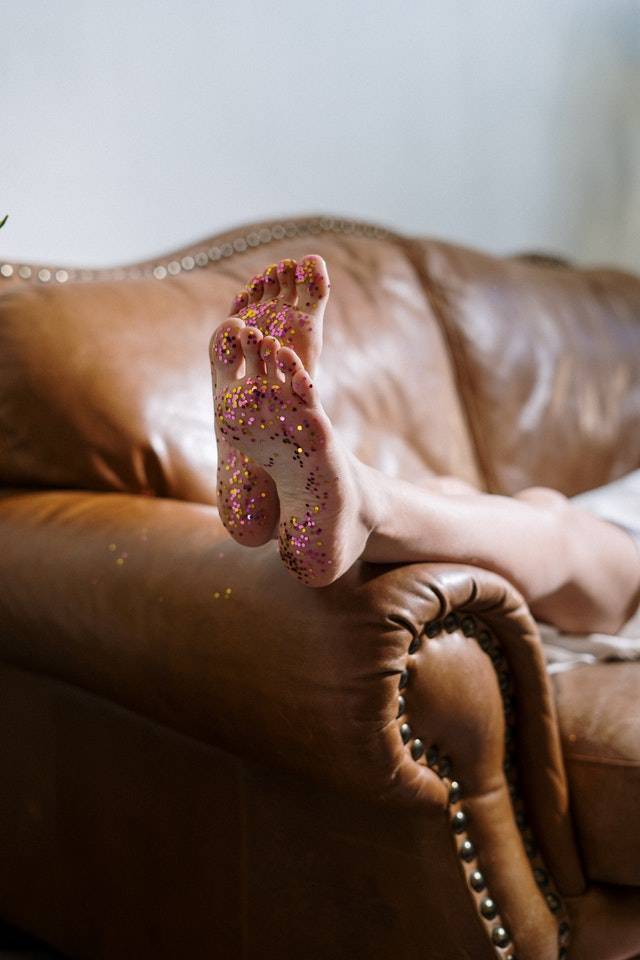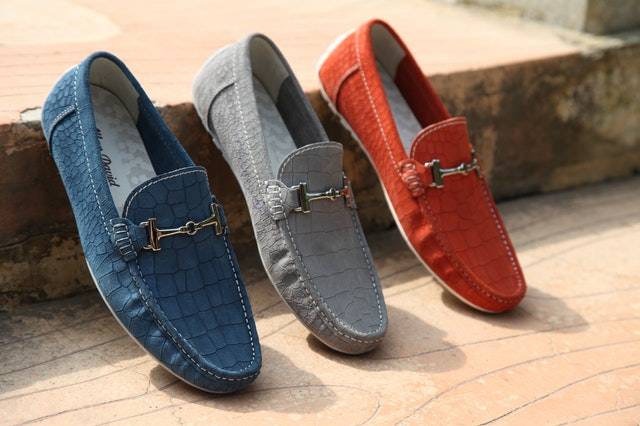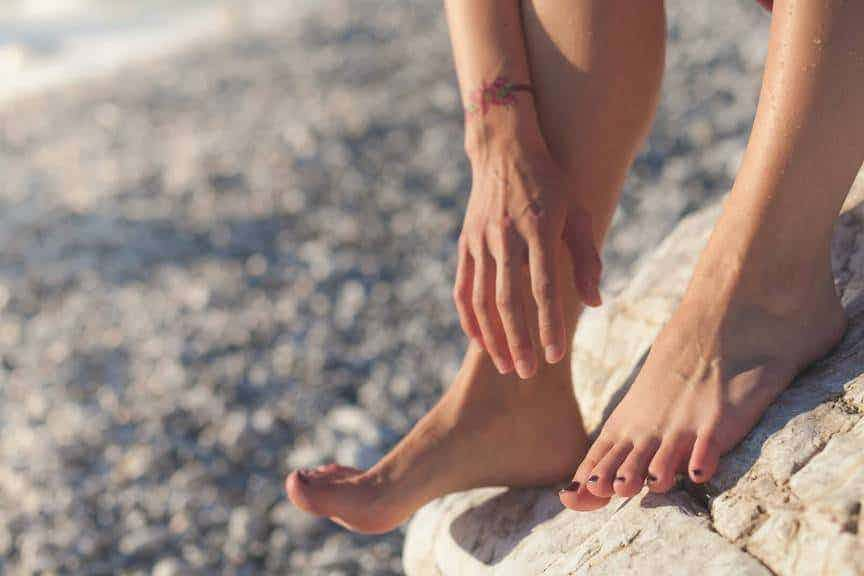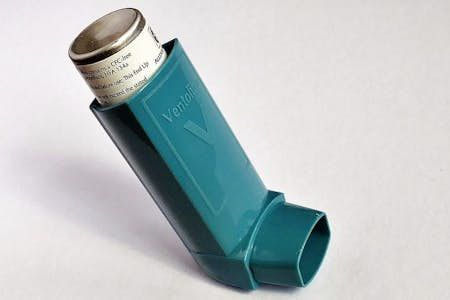What are corns?
Corns are little round bumps consisting of thick layers of skin and are similar to calluses. However, corns are generally smaller, round in size and can be painful. Corns also tend to only form on your feet while you can get calluses on both your hands and feet.
Corns can be either hard or soft. Soft ones are usually found between your toes, as the skin is moist.
How do you get corns?
Both calluses and corns form when there’s friction. A labourer’s hands, for example, are usually filled with calluses as they develop to protect the hands.
Corns form to protect the soft tissue of your feet, but unlike with calluses, the skin is sometimes inflamed and can, therefore, become painful. It can also become sore if the corn presses into deeper layers of skin in the foot, even if it’s not inflamed.
Furthermore, corns can develop from friction and bone pressure in a particular area of the foot.
As a general rule, you get corns from wearing shoes that are either too small or too big. If the shoes squeeze your toes together, that can cause unnecessary friction, as can wearing tight shoes that rub against your skin in one spot. Likewise, loose shoes that make your feet slide inside the shoes, causing friction, can be responsible, too.
You can also get corns from wearing shoes that put too much pressure on one area of your foot. For example, high heels tend to put unnecessary pressure on different parts of your feet.
As we grow older, the fatty tissue in our skin becomes depleted. This can lead to more corns and calluses as our feet become less padded.
Likewise, bony feet seem to be more prone to corns and calluses.
You may also have feet that are somewhat unusually shaped, therefore putting pressure on a specific area. Check with a doctor to see if you need padded shoe inserts.

Tip:
When buying shoes, don’t go shopping first thing in the morning. Stay on your feet for a while, so they're warm and a bit more swollen like they would be at the end of the day. This ensures you don’t buy shoes that are too small.
How do you get rid of corns permanently? You prevent them. You wear well-fitting shoes with excellent padding. You may even want to consider buying one size too large shoes and fitting a nice insole.

Are corns contagious?
No, corns are just thickened patches of skin, which have developed due to friction or pressure. Corns form to protect the soft tissue in your feet.
If you develop inflammation in or around the corn and it omits any discharge, you should treat it as a wound and wash your hands after touching it.
How do you treat corns?
For most people, home treatment is all that’s needed for corns. These are some popular home treatments for corns:
- Warm foot baths followed by rubbing the area with either a pumice stone, nail file, emery board, or washcloth (beware not to scrape off too much skin, as it can cause inflammation)
- After washing, apply a natural moisturiser, such as aloe vera, followed by a natural butter, such as cacao butter, or shea butter, possibly mixed with an oil, such as olive oil.
- You can also use a foot cream throughout the day.
- To remove pressure on the corn, use a chemical-free corn pad (these usually look like a doughnut with a hole for the corn).
- Follow the tips below for prevention—this is essential as the corn will only grow back otherwise.
- Corn removal pens and corn pads containing either salicylic acid or trichloroacetic acid (use this as a last resort)
Warning:
Salicylic acid and trichloroacetic acid can irritate the skin and are best used under medical supervision. If misused, these acids can make the situation worse by causing inflammation. Neither acid should be used if you have diabetes, poor blood circulation, or heart problems.
When should you see a doctor about your corns?
You should see your GP if you have a corn and:
- It’s excruciatingly painful.
- The corn looks inflamed (red or swollen), bleeds, or omits pus.
- You have diabetes, poor blood circulation, or heart disease/heart problems and get a corn.
- You have tried home remedies for some time, but the corn won’t go away and is annoying you.
If you develop a corn and have underlying circulatory problems, suffer from heart disease or other heart problems, or have diabetes, you should immediately seek medical attention.
We spoke to London podiatrist Steven Thomas, who told Health Times: "The main principle is that callus develops from friction, and corns develop from pressure. They are both hardened skin but callus is more a protective barrier over the skin, and corns are condensed compacted skin that usually form an inverted cone shape. Corns therefore are usually the ones that cause pain.
"A thin flexible layer of callus is fine but if it is thick and hard it should be shaved/filed down so that it is flexible. A corn is best removed by a Podiatrist who can carefully use a scalpel blade (it shouldn't be painful). Corn plasters containing salicylic acid can soften corns which will reduce the corn pain. However, they almost always have a wider circumference to the corn and can therefore burn the healthy surrounding skin.
"To prevent the corns returning, the pressure needs to be removed. So usually a change in footware or offloading a point under the foot using a custom insole. A 10% urea cream can help maintain areas that develop callus."
How can you prevent corns?
As previously mentioned, buying well-fitting shoes that don’t come with too high heels is a great starting point. In general, avoid any shoe that’s too tight, too loose, squeeze your toes, or put unnecessary pressure on one area of your foot.
Soft socks can also help prevent corns, as can footpads (such as heel pads) and soft insoles. Make sure to buy shoes with good soles that have some padding, too. Not only will it help prevent corns, but it will also help protect your feet!
If you get corns between your toes, try using toe separators.
And remember, even if you have to wear a particular style of shoes to work or social functions, you don’t have to wear them when travelling to or from there. Don’t put them on until the last minute and take them off as soon as you can! If you have a lunch break when you go for a walk, change to walking shoes.
You may also want to keep two or three different pairs of exercise or walking shoes so that you vary the pressure and friction on different parts of your feet.
Keep your skin soft by regularly using natural moisturisers and vegetable oils or butters, as well as a pumice stone on your feet. Don’t overuse the pumice stone, though; you don’t want to scrape off too much skin!






